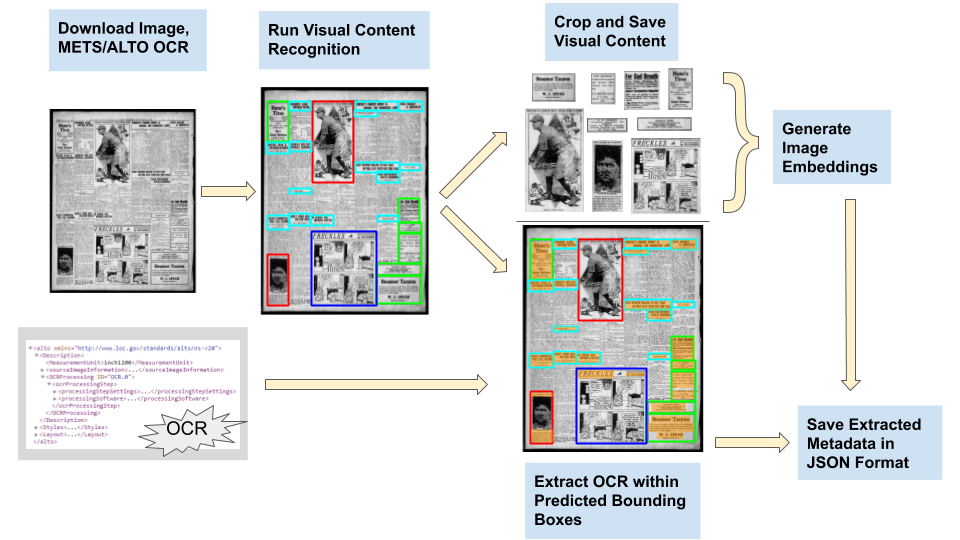The Newspaper Navigator Dataset: Extracting And Analyzing Visual Content from 16 Million Historic Newspaper Pages in Chronicling America
Chronicling America is a product of the National Digital Newspaper Program, a partnership between the Library of Congress and the National Endowment for the Humanities to digitize historic newspapers. Over 16 million pages of historic American newspapers have been digitized for Chronicling America to date, complete with high-resolution images and machine-readable METS/ALTO OCR. Of considerable interest to Chronicling America users is a semantified corpus, complete with extracted visual content and headlines. To accomplish this, we introduce a visual content recognition model trained on bounding box annotations of photographs, illustrations, maps, comics, and editorial cartoons collected as part of the Library of Congress's Beyond Words crowdsourcing initiative and augmented with additional annotations including those of headlines and advertisements. We describe our pipeline that utilizes this deep learning model to extract 7 classes of visual content: headlines, photographs, illustrations, maps, comics, editorial cartoons, and advertisements, complete with textual content such as captions derived from the METS/ALTO OCR, as well as image embeddings for fast image similarity querying. We report the results of running the pipeline on 16.3 million pages from the Chronicling America corpus and describe the resulting Newspaper Navigator dataset, the largest dataset of extracted visual content from historic newspapers ever produced. The Newspaper Navigator dataset, finetuned visual content recognition model, and all source code are placed in the public domain for unrestricted re-use.
PDF Abstract


 MS COCO
MS COCO